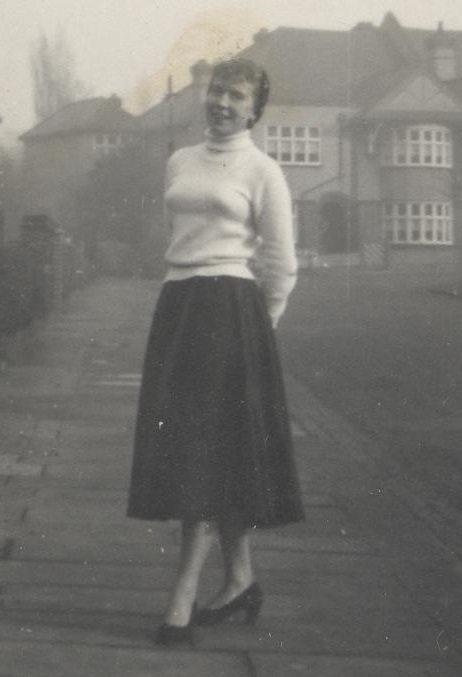Fairy Tales (1950)
Lucy Pevensie, the heroine of The Lion, The Witch, and The Wardrobe, has delighted millions of the young-and the young at heart- as they accompanied her on a fantastical adventure in the land of perpetual winter. Her non-fictional counterpart was her namesake, Lucy Barfield.
The Inklings were a literary group who at an Oxford pub, The Eagle and Child, nicknamed The Bird and Baby, to discuss theology and their works-in-progress. Lewis read from The Chronicles of Narnia, J.R.R. Tolkien from The Lord of the Rings, Owen Barfield from his poetry. 
A lawyer out of necessity, a writer out of passion, Owen married Maud, a dancer and choreographer. Their only daughter, Lucy, was born in 1935, in Northwest England, near the Scottish border. The Barfields adopted her, (as well as two sons,) when she was two years old. In 1954, Lewis gave her The Lion the Witch and the Wardrobe that bore the dedication:
My Dear Lucy, I wrote this story for you, but when I began it I had not realized that girls grow quicker than books. As a result you are already too old for fairy tales, and by the time it is printed and bound you will be older still. But some day you will be old enough to start reading fairy tales again. You can then take it down from some upper shelf, dust it, and tell me what you think of it. I shall probably be too deaf to hear, and too old to understand a word you say but I shall still be, your affectionate Godfather, C.S. Lewis.
When Own left to lecture at Brandeis, Lucy accompanied her father to the United States where she taught piano in Cambridge, Massachusetts. On November 22, 1963, the date of President John F. Kennedy’s assassination, her godfather passed away. At the same juncture, Lucy came down with multiple sclerosis. She married her caregiver, Bevan Rake; when he passed away twelve years later from a heart attack, she spent the rest of her life in the hospital. For her last five years, Lucy was unable to move, speak, or feed herself. As with the gifts given to the Pevensie children in Narnia, her godfather’s dedication brought her lifelong joy. She stated, “What a wonderful oasis of pleasure I have in this pretty terrible world, being recognized as Lucy.” Owen, in response to his child’s courage stated, “I could go down on my knees before my daughter.”
Lucy Pevensie shared with her counterpart fair hair and indomitable spirit as illustrated by her quote, “Why, Sir, I think-I don’t know-but I think I could be brave enough.” She was born in 1932, the youngest sister of Peter, Edmund, and Susan. In 1940, as with Lucy Barfield, her family sent her to the countryside to escape the Blitz. In the novel, Lucy stayed at Professor Kirke’s country estate where she entered an ancient wardrobe, a portal to Narnia in the clutches of the malignant White Witch. In the course of her journey, Father Christmas appears who gifted “Eve’s Daughter-“Lucy’s Narnia name-a bottle of fireflower, a drop of which could cure any harm. Had the real Lucy had possession of the elixir she would have been spared her long descent into her own version of an eternal winter. But Ms. Barfield’s strong faith, the love of her family, and her inner strength saved her from lapsing into hopelessness. Her courage is illustrated in the words of her poem, “But test too many things/ To find the “whys” and “wherefores”/This is not wise! It is not right! /Accept. There is a reason.”
At the close of the tale of enchantment, at the royal castle of Cair Paravel, Lucy becomes Queen Lucy the Valiant of the Glistening Eastern Sea, thereby fulfilling an ancient prophecy. After fifteen years of Narnia time, minutes in real time, the children return to the other side of the wardrobe. The only person with whom they shared their otherworldly adventure was the professor. The children’s tale rang true as he had once visited Narnia.
Although the two Lucys shared many traits, their strongest link is the one of which C.S. Lewis wrote in his dedication, “But some day you will be old enough to start reading fairy tales again.”


